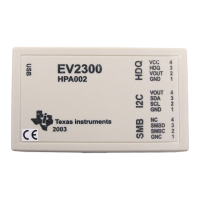Data Move
Data Move
Data Move Instructions
DATA ↔ DATA (4G ↔ 64K)
DATA ↔ PGM (4G ↔ 4M)
Faster than Load / Store, avoids
accumulator
Allows access to program memory
Optimal with RPT (speed and code size)
In RPT, non-mem address is auto-
incremented in PC
MOV loc16, *(0:16bit)
MOV *(0:16bit), loc16
32-bit address memory
location
16-bit address concatenated
with 16 leading zeros
.sect “.code”
START: MOVL XAR5,#x
MOVL XAR7,#TBL
RPT #len-1
|| PREAD *XAR5++,*XAR7
...
x .usect “.samp”,4
.sect “.coeff”
TBL: .word 1,2,3,4
len .set $-TBL
PREAD loc16 ,*XAR7
PWRITE *XAR7, loc16
pointer with a 22-bit
program memory address
Conditional Moves
Instruction Execution (if COND is met)
MOV loc16,AX,COND [loc16] = AX
MOVB loc16,#8bit,COND [loc16] = 8bit
If A<B, Then B=A
Accumulator
0 0 0 0 0 1 2 0
MOVW DP, #A
MOV AL, @A
CMP AL, @B
Example
A .usect “var”,2,1
B .set A+1
.sect “code”
MOV @B, AL, LT
0 1 2 0
0 3 2 0
Data Memory
B
A
0 1 2 0
Data Memory
B
A
0 1 2 0
Before After
Instruction Execution (if COND is met)
MOVL loc32,ACC,COND [loc32] = AX
The conditional move instruction is an excellent way to avoid a discontinuity (branch or call)
based upon a condition code set prior to the instruction. In the above example, the 1
st
step is to
C28x - Appendix C - Assembly Programming C - 13

